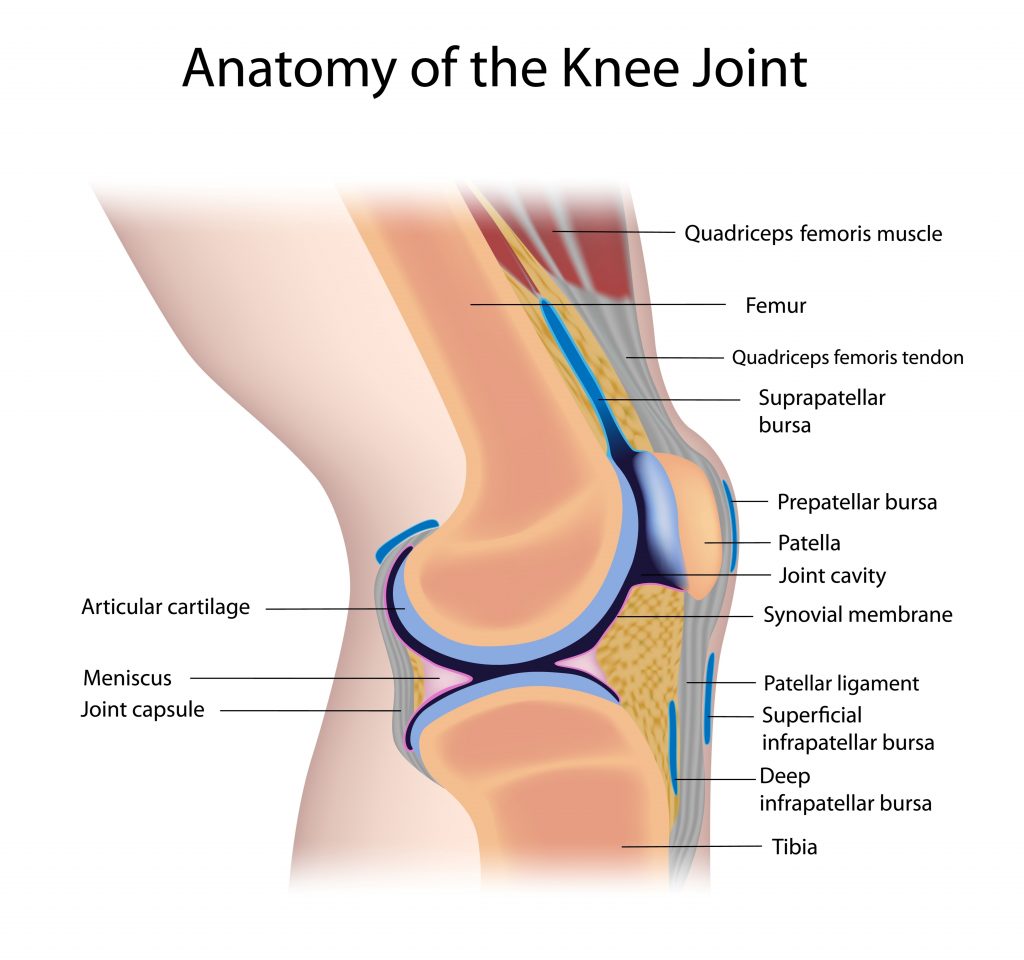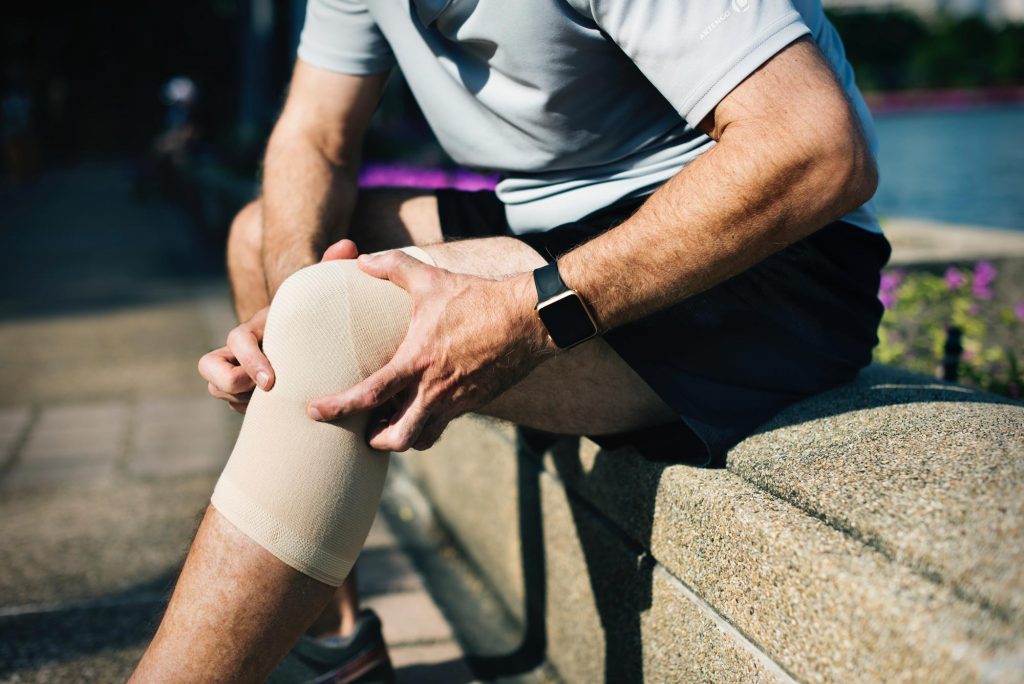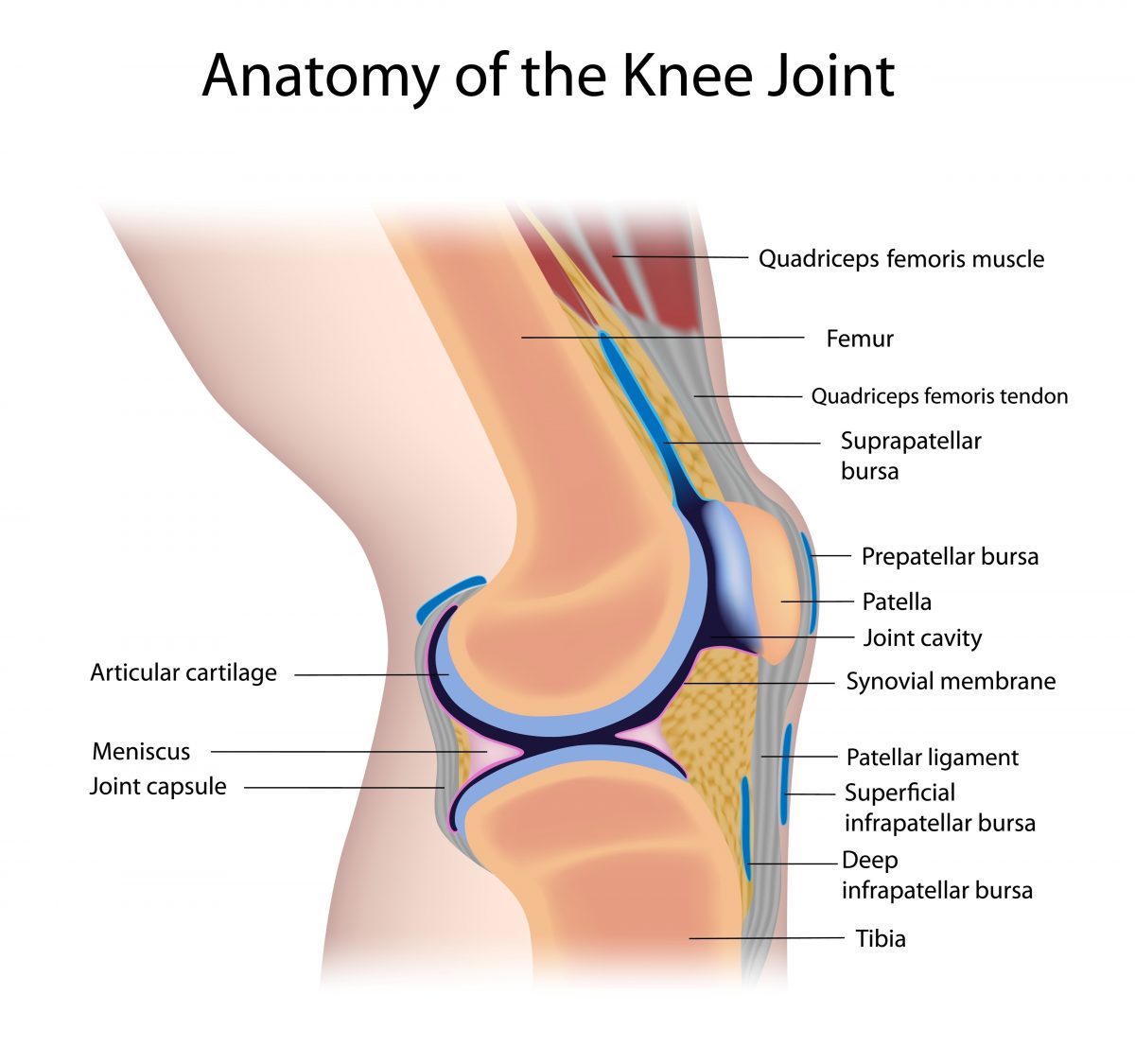Table of Contents
One of the worst ways to treat knees is to wait until they are painful because it means a medical issue is developing. It could be arthritis, a joint injury, or deterioration due to age. Some conditions that have a genetic aspect may not be fully preventable, but even in the case of joint disease, protecting the knee from injury or rapid deterioration is smart.
Role of the Knee Joint
Beginning early in life, taking care of your knees is important. The knee joint is one of the most important joints in the body because it enables walking, standing and running while supporting the weight of the body. Since it plays a big role in so many movements and carries so much body weight, many people experience knee problems at some point in their life that are often preventable.
The knee joint is a hinged synovial joint. A synovial joint is a joint cavity located at a site where the moving surfaces of bones contact each other. A thin layer of cartilage (menisci) curves around the inside and the outside of the knee so the joint is cushioned and bones can move smoothly.
The bones are connected with ligaments outside the joint and tendons connect muscles to bones, giving the joint stability. A healthy synovial joint is filled with synovial fluid that is secreted by a thin synovial membrane in the joint. This is also a key element of the ability of the joint to function properly because it acts as a lubricant and provides nourishment to the joint’s cartilage.
Keeping the knee joints healthy requires taking care of the various components of the knee structure by keeping:
- The synovial membrane in the joint cavity intact so it continues to produce lubricating fluid.
- Bone cartilage intact so the bones can move smoothly.
- Ligaments strong so they continue to support and strengthen the joint.
- Knee muscles (the muscles around the knees) flexible and strong.
- Back, core and leg muscles flexible and strong to prevent undue pressure from being placed on the knees.

Keeping Knees Healthy and Free from Injury
There are two major ways to protect the knees:
- Maintaining knee joint health
- Preventing knee injury
Maintaining Knee Joint Health
The knees work hard over a person’s lifetime. As you age, knees experience normal wear-and-tear, which means the knee cartilage wears away, bones begin to rub together and the joint lining is unable to produce enough synovial fluid (lubrication). It is best to take care of your knees all your life, but it is never too late to adopt new habits.
Some practical tips for maintaining joint health include:
- Lose weight
If overweight or obese, your joints are placed under extra pressure. Walking puts pressure that is the equivalent of up to five times the body weight. Extra weight adds to that pressure and can trigger or accelerate joint deterioration.

- Maintain good posture
Poor posture is a major cause of joint pain. The skeleton is a well-balanced aligned structure. Unfortunately, many people fail to maintain good posture, which means keeping the spine aligned.
Slouching while standing, hunching over a desk and walking with shoulders and head pushed forward leads to a misaligned spine and weakens back muscles. This stresses all the joints, including the hips and knee joints, because bodyweight is not normally distributed. Maintain good posture at all times – head held up, shoulders back and spine straight.
- Exercise
Knee joints are stabilized by leg muscles, and ligaments and tendons. Do exercises that strengthen muscles, ligaments and tendons throughout the body, but be sure to include exercises that target the knees and supporting muscles in the butt, core and legs. They include exercises like wall squats and step-ups.
- Properly lift heavy items
Often, people improperly lift boxes, young children and other weights, or they try lifting a weight that is beyond their lifting capacity. They end up eroding the cartilage in their knees or strain supporting muscles in the back, hips or legs.
Always lift with the leg muscles without twisting the knees or body, adding stability and power to the move. Bend the knees, squat down, pick up the load and straighten the legs while lifting. Never twist the body to lift from the right or left, and ask for help lifting exceptionally heavy items.
- Wear proper shoes
Fashionable shoes are sometimes very hard on the knees. Heels on men’s or women’s shoes that are over an inch tall throw the spine out of alignment force the calf muscles to tighten and put pressure on the ankle and knee joints. By wearing the wrong shoes, knee pain may develop or get worse. Also, wear cushioned shoes or gel inserts when work requires standing for long periods.
How to Prevent Knee Injury and Avoid Knee Surgery
The knees are subject to injuries that include fractures of the bones around the knee, dislocation, tears of soft tissue and sprains. Knees are also injured when people do things like kneeling on hard surfaces and damaging the bursae that cushion the tendons and ligaments. Bursitis can be very painful.
Taking precautions to prevent knee injury and protecting knees during activities that have the potential to damage a knee joint, like running or jogging, can prevent some of the knee injuries people commonly experience. Precautions can also help people avoid knee surgery.
Following the suggestions for keeping joints healthy also contributes to preventing knee injury. Additional recommendations for knee injury prevention include:
- Avoid pounding and twisting the knee joints
Some activities are hard on the knees because they pound the knee joints. They include jogging or running and aerobics. It is better to use an elliptical machine, walk or swim.
However, people who enjoy these activities are not likely to stop. If participating in them, be sure to learn how to protect knees while running by maintaining a good posture or how to do aerobics by avoiding rotation of the knees and hips. When doing sports requiring jumping, learn to keep joints aligned when landing after a jump, meaning the hips remain over the knees and the knees are over the ankles. Also, wear cushioned shoes during any knee-pounding exercise routines.
- Keep muscles strong
Standing for long periods of time, vigorous exercise and participating in sports are all activities that can lead to knee injuries. The key to preventing injury is keeping hip, leg, buttock and core muscles strong at all times by regularly exercising, including weight training.
- Warm up and stretch
Improve the mobility of knees and the range of motion of knees by stretching the hips, knees and ankles before exercising, participating in athletic activities or working when work requires using the knees a lot. When hips and ankles are tight, the knees are impacted.
Stretching the muscles in the front and back of the thighs reduces tension on tendons, and that in turn helps relieve pressure on the knees.
- Wear knee supports
Sometimes, it is wise to wear knee supports, like the elastic compression sleeves, when participating in contact sports or when experiencing knee pain due to arthritis. Supports can provide extra support for the joint.

Slowing the Aging Process
Keeping knee joints healthy and free from injury can prevent knee pain. Of course, natural aging can also lead to knee joint deterioration. Slowing the aging process in knee joints can prevent osteoarthritis, a wear-and-tear condition, from developing or can significantly slow the deterioration process down.
To age in the best way possible, eat a healthy diet, get plenty of exercises, maintain a healthy weight, sleep seven to eight hours each night and enjoy time with friends and family. There is no shortcut to keeping your knees and the rest of your body healthy.
